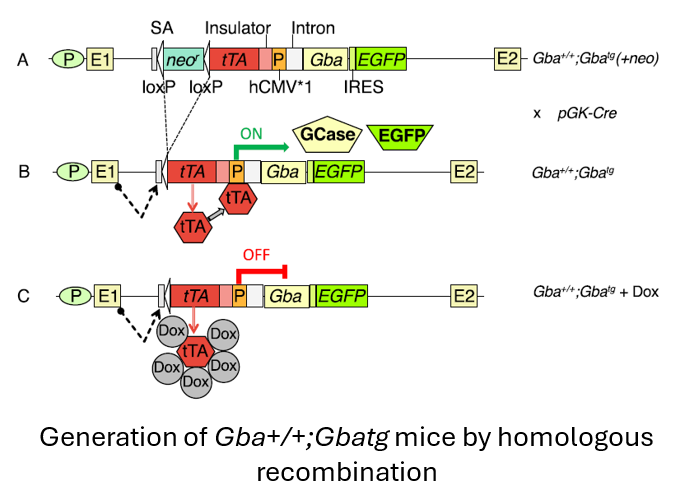The GBA (Gba⁻/⁻;Gbatg) mouse model represents a chronic neuronopathic Gaucher disease (type 3) model that bridges the gap between acute (type 2) and systemic (type 1) forms.
These mice lack the endogenous Gba gene but express a Gba transgene under doxycycline control, enabling moderate glucosylceramide accumulation and survival up to ~10 months, significantly longer than type 2 models. They exhibit progressive behavioral abnormalities, Purkinje neuron loss in the cerebellum, gliosis, and bone deformities, reflecting both neurological and systemic aspects of the disease. The model reproduces key neuropathological and biochemical features of human type 3 Gaucher disease, making it valuable for studying disease mechanisms and testing therapeutic strategies.
Strain background: C57BL/6JOlaHsd and C57BL/6J
Refereces
Pewzner-Jung et al, 2021, Prog Neurobiol
Milenkovic I et al, Gene therapy, 2024




